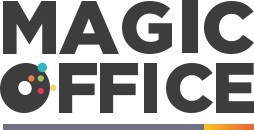
The Role of Portfolio Updates in Strategic Decision-Making
Strategic Influence of Portfolio Updates in Decision-Making
In today's rapidly evolving business landscape, portfolio updates play a critical role in strategic decision-making, a vital function for project managers and portfolio managers alike. These updates provide a comprehensive view of the organization’s current projects, highlighting their alignment with long-term business strategies and strategic goals. This alignment helps ensure that each project within the portfolio contributes effectively to the organization's overarching objectives. For management executives, these updates are indispensable tools to gauge the effectiveness of resource allocation and risk management across various projects. They allow executives and portfolio managers to categorize projects by priority, financial implications, and strategic alignment. This method provides invaluable insight into where resources are best allocated and ensures that strategic decisions are data-driven and strategically sound. Portfolio updates encapsulate essential information for executives to navigate through the complex landscape of project management and portfolio management. They aid in identifying trends, potential risks, and opportunities for optimizing the resource allocation process. Moreover, they offer a clear understanding of the performance metrics that drive strategic goals which are crucial for informed decision-making. By leveraging the power of real-time data, companies can ensure that their management processes are adaptable and responsive to changes, aiming for efficiency and efficacy. In the dynamic business environment of the Arabian Emirate, engaging with senior leaders through strategic insights derived from portfolio updates can significantly bolster the impact of strategic initiatives. Overall, the role of portfolio updates is foundational in guiding strategic initiatives within organizations by enhancing visibility, accountability, and foresight in project portfolio management and governance.Key Metrics Executives Focus On
Essential Metrics for Comprehensive Insights
When it comes to providing effective portfolio updates to executives, it’s crucial to focus on specific metrics that align with strategic goals. These metrics offer portfolio managers a structured approach to communicate the health, performance, and potential risks of project investments.
Executives often look for data that can help steer the organization's business strategy in the right direction. Here are some key metrics and considerations to focus on:
- Financial Performance: Executives typically want to understand the overall financial status of the portfolio, including budget allocations, cost overruns, and financial projections over time. It’s essential for portfolio managers to deliver insights into both project and operational budgets to ensure strategic financial stewardship.
- Resource Utilization: Effective resource allocation is vital to maintaining the momentum of projects. Executives need to see how resources are being distributed across the project portfolio and identify areas where additional support might be necessary.
- Project Risk: Understanding potential risks is paramount for making informed decisions. Project managers should highlight known risks, their potential impact on the projects, and the mitigation strategies in place.
- Strategic Alignment: It’s crucial to demonstrate how portfolio projects support long-term strategic goals and contribute to the company's overall direction. Clear alignment ensures that management is focused on initiatives that advance business strategy.
- PPM Process Analytics: By leveraging portfolio management tools, real-time data can be utilized to showcase portfolio governance. This includes reporting on the efficacy of management processes and their adaptability to changing business environments.
Thoroughly addressing these metrics will not only align with executive needs but also facilitate informed decision-making. For further insights on engaging with senior leaders, explore this key strategy.
Challenges in Communicating Portfolio Updates
Bridging Communication Gaps in Portfolio Reporting
Translating the intricate details of project portfolios into clear, actionable insights for executives can be a formidable task. This communication challenge often stems from the diverse focus areas within strategic management and portfolio management. While portfolio managers dive deep into project metrics, resource allocation, and risk management, executives frequently seek concise data that aligns with long-term business strategy and strategic goals.
One primary challenge is filtering the vast amounts of data from multiple projects. Executives are interested in the essence of portfolio governance without delving into every detail. Striking the right balance between comprehensive project details and strategic highlights is crucial for effective decision-making. Unlike project managers, executives might overlook granular data points unless they impact the strategic alignment or financial outcomes of the portfolio. Therefore, prioritizing information becomes essential.
Moreover, the terminology used in project management can be a barrier. Terms familiar to portfolio managers, like strategic risk or resource management, may require simplification for executive understanding. Crafting reports that are both data-rich and strategically relevant enhances their value, keeping them aligned with executive business strategy needs.
Utilizing management software can significantly aid in bridging communication gaps, offering real-time updates and facilitating better resource allocation insights. For instance, platforms that provide a high-level overview while allowing drill-down into specific project details can better cater to executive preferences, ensuring that the portfolio projects effectively support strategic objectives.
Additionally, understanding the cultural nuances specific to the Arabian Emirates is critical when presenting portfolio updates. The cultural context can influence how information is perceived and prioritized within the strategic decision-making process.
Incorporating tools like FAMIS 360 is another way to enhance communication, fostering clarity and ensuring that the management process caters to the specific needs of the governance team and project portfolio analysis.
Tailoring Portfolio Updates for Executive Preferences
Adapting Portfolio Information for Executive Decision-Makers
Portfolio updates serve a pivotal role in ensuring that executives can assess the status of their organization's strategic objectives. However, presenting this information requires sensitivity to the preferences and cognitive processes of these decision-makers. Understanding the key elements executives prioritize is crucial to crafting impactful updates. Executives often have limited time and need access to concise, high-level overviews that highlight critical insights but also require the ability to dive deeper into specific data points when necessary. Consider the following strategies to tailor portfolio updates effectively:- Prioritize Strategic Relevance: Align the content with the strategic goals of the organization. Ensuring the updates are directly relevant to business strategy will maximize executive engagement and utility in decision-making.
- Highlight Key Metrics: Focus on essential financial and strategic metrics that resonate with business priorities. Portfolio management data such as risk assessments, resource allocation efficiencies, and project performance should be prominently featured.
- Use Visualization: Present data using visual aids like charts and graphs to enable quick comprehension of complex information. This aligns with management's need for real-time insights without getting bogged down in details.
- Ensure Clarity and Accessibility: The language and formatting of updates should be clear and accessible, allowing executives from different cultural backgrounds to grasp the information with ease. Recognizing cultural nuances in communication is critical, as it influences how information is received and interpreted.
- Leverage Technology: Utilize advanced portfolio management software to generate dynamic and interactive reports. This not only streamlines the updating process but also improves adaptability to the shifting demands of project managers and portfolio managers.
The Impact of Cultural Nuances on Portfolio Reporting
Considering Cultural Contexts in Reporting
Understanding cultural nuances is crucial for effective portfolio reporting, particularly in diverse regions like the Arabian Emirates. In portfolio management, executives often place significant emphasis on factors like respect, hierarchy, and relationships within professional settings. These elements can have a profound impact on how information is received and processed.- Hierarchy and Respect: In many Arabian cultures, respect for hierarchy is paramount. Executives expect communication that aligns with their status within the organization. Portfolio managers need to be mindful of this when crafting portfolio updates, ensuring that the language used respects cultural intricacies and maintains professionalism.
- Emphasis on Relationships: The emphasis on building and maintaining strong personal relationships in business can affect how portfolio updates are communicated. Managers should establish and nurture relationships before crucial portfolio meetings to secure buy-in from executives.
- Decision-Making Processes: Collective decision-making is favored in many Arabian cultures. This means that portfolio updates should be framed in a way that encourages discussion and consensus within the governance team. Providing comprehensive data and insights can facilitate this process, aligning with the overall strategic goals of the organization.
Leveraging Technology for Enhanced Portfolio Updates
Enhancing Portfolio Updates with Advanced Technology
In the competitive realm of project portfolio management, leveraging technology has become indispensable for an effective management process. Modern tools enable portfolio managers to provide real-time data and financial insights, crucial for strategic decision-making and long-term business strategy alignment. Properly harnessing these technological advancements allows managers to efficiently track project performance and manage resources. Here’s how technology can revolutionize portfolio updates:- Real-Time Data Access: Management software ensures that project managers can access up-to-date information, allowing for timely adjustments and strategic alignment with business objectives.
- Enhanced Communication: Advanced digital tools facilitate streamlined communication between the governance team and executives, reducing risk factors by ensuring everyone is informed at each stage of the portfolio management process.
- Optimal Resource Allocation: Project managers use technology to optimize resource allocation, identifying which projects need more focus and what resources require redistribution.













